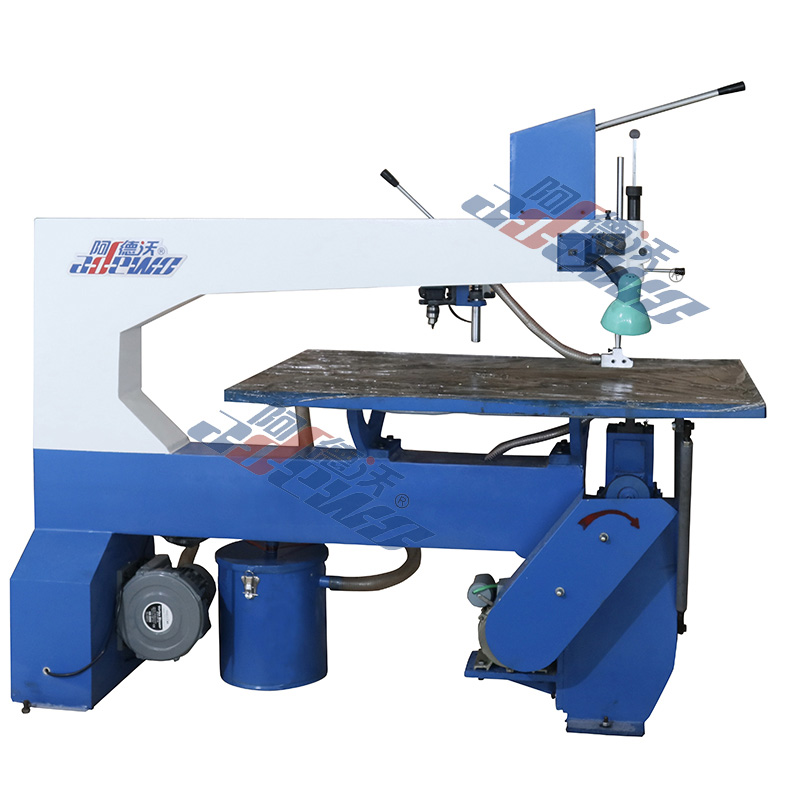Maintaining Peak Performance: The Essential Maintenance for Die Boards Jigsaw Cutting Machines
2024-05-10
In the fast-paced world of manufacturing, uptime is critical. Any downtime due to equipment failure or maintenance issues can disrupt production schedules and impact the bottom line. This is why proper maintenance of machinery is essential, including Die Boards Jigsaw Cutting Machines. Let's explore the level of maintenance required for these machines and common issues users should be aware of to ensure they continue operating at peak performance.
Maintenance Requirements for Die Boards Jigsaw Cutting Machines:
1. Regular Cleaning: Regular cleaning of Die Boards Jigsaw Cutting Machines is essential to prevent the buildup of debris, dust, and cutting residues. This includes cleaning the cutting head, worktable, clamping system, and other components using compressed air, brushes, or vacuum systems. Keeping the machine clean helps maintain cutting precision and prolongs the life of cutting tools.
2. Lubrication: Lubrication is critical to ensure smooth operation and reduce wear and tear on moving parts. Die Boards Jigsaw Cutting Machines may require periodic lubrication of bearings, slides, gears, and other mechanical components. It's important to use the appropriate lubricants recommended by the manufacturer and follow the recommended lubrication intervals to prevent friction-related issues.
3. Blade Maintenance: The cutting blade is a critical component of Die Boards Jigsaw Cutting Machines, and proper maintenance is essential to ensure optimal cutting performance. Users should regularly inspect the blade for signs of wear, damage, or dullness and replace it as needed. Additionally, blades may need to be sharpened or reconditioned periodically to maintain cutting precision.
4. Alignment and Calibration: Die Boards Jigsaw Cutting Machines rely on precise alignment and calibration to achieve accurate cutting results. Users should periodically check and adjust the alignment of cutting heads, worktables, and other components to ensure they are properly aligned. Calibration of cutting parameters such as cutting speed, pressure, and feed rate may also be necessary to maintain optimal cutting performance.
5. Electrical and Mechanical Inspections: Regular inspections of electrical and mechanical components are essential to identify and address potential issues before they escalate into major problems. This includes checking wiring, connectors, motors, sensors, and other components for signs of wear, damage, or malfunction. Any abnormalities should be promptly addressed to prevent equipment failure or safety hazards.
Common Issues and Troubleshooting Tips:
1. Blade Dulling or Breakage: One common issue with Die Boards Jigsaw Cutting Machines is blade dulling or breakage, which can result in poor cutting quality or machine downtime. Users should regularly inspect the blade for signs of wear and replace it as needed. Additionally, ensuring proper blade tension and cutting parameters can help prevent blade breakage.
2. Material Jamming: Material jamming can occur if the workpiece is not properly secured or if cutting parameters are not set correctly. Users should ensure that the material is securely clamped in place and that cutting parameters such as speed, pressure, and feed rate are appropriate for the material being cut.
3. Mechanical Misalignment: Mechanical misalignment of cutting heads, worktables, or other components can result in inaccurate cuts or machine malfunction. Users should regularly check and adjust the alignment of these components to ensure they are properly aligned.
4. Electrical Issues: Electrical issues such as wiring faults, connector failures, or sensor malfunctions can cause machine downtime or safety hazards. Users should periodically inspect electrical components and connections for signs of wear or damage and address any abnormalities promptly.
5. Software Glitches: Some Die Boards Jigsaw Cutting Machines may experience software glitches or programming errors that can affect machine operation. Users should ensure that software updates are installed regularly and that cutting programs are properly configured and tested before use.
In conclusion, proper maintenance is essential to ensure the reliable operation of Die Boards Jigsaw Cutting Machines. By following regular maintenance procedures and addressing common issues promptly, users can minimize downtime, prolong machine life, and optimize cutting performance. By investing time and resources in maintenance, manufacturers can ensure that their Die Boards Jigsaw Cutting Machines continue to deliver high-quality cuts and meet production demands with efficiency and reliability.



